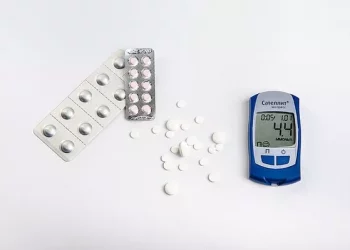Diabetes is one of the most prevalent chronic diseases globally, affecting millions of individuals. Understanding blood glucose levels is crucial for the prevention, diagnosis, and management of diabetes. Blood glucose (or blood sugar) levels can be assessed in several ways, and the thresholds for diagnosing diabetes can sometimes be confusing. However, it is critical to have clarity on what constitutes a diabetic blood glucose level to ensure proper medical intervention and prevent complications. This article aims to provide a detailed understanding of blood glucose levels, the diagnostic criteria for diabetes, and how they can vary under different circumstances.
Blood Glucose: A Brief Overview
Blood glucose is the amount of glucose present in the blood. Glucose is a primary source of energy for the cells of the body, obtained from the food we eat. After meals, glucose enters the bloodstream, and the pancreas releases insulin, a hormone that helps cells absorb glucose. When the body’s ability to produce insulin is impaired or the body becomes resistant to insulin, glucose builds up in the blood, leading to high blood sugar levels. This condition, over time, can lead to diabetes.
Monitoring blood glucose levels is essential to understand how well your body is managing glucose and whether your body is at risk of developing diabetes. Blood glucose levels can be measured using a variety of tests, and each method has specific criteria for diagnosing diabetes.
Types of Blood Glucose Tests
Fasting Blood Glucose (FBG): The fasting blood glucose test is done after an individual has fasted for at least eight hours. This is a reliable test used to check for diabetes or prediabetes. It measures the level of glucose in the blood after a period of fasting.
Oral Glucose Tolerance Test (OGTT): The OGTT is often used to diagnose gestational diabetes or type 2 diabetes. It involves fasting overnight and then drinking a glucose solution. The blood glucose levels are measured at intervals, usually after 1 and 2 hours, to observe how well the body processes the glucose.
Hemoglobin A1c (HbA1c) Test: The HbA1c test provides an average blood glucose level over the past two to three months. This test measures the percentage of glucose attached to hemoglobin in red blood cells. It is not affected by short-term fluctuations in blood glucose and is used to diagnose and monitor long-term blood glucose control.
Random Blood Glucose Test: A random blood glucose test measures the blood glucose level at any time of the day, regardless of when you last ate. This test is often used in the emergency setting when symptoms of diabetes, such as excessive thirst, frequent urination, and blurred vision, are present.
Diagnostic Criteria for Diabetes
In order to diagnose diabetes, blood glucose levels must exceed certain thresholds. These thresholds, based on the type of test used, can vary slightly. The following are the general guidelines for diagnosing diabetes according to the American Diabetes Association (ADA) and other major health organizations:
1. Fasting Blood Glucose (FBG) Test
Normal: Less than 100 mg/dL (5.6 mmol/L)
Prediabetes (Impaired Fasting Glucose): 100 to 125 mg/dL (5.6 to 6.9 mmol/L)
Diabetes: 126 mg/dL (7.0 mmol/L) or higher on two separate tests
A fasting blood glucose level of 126 mg/dL or higher suggests that the individual has diabetes. However, a single elevated result is not enough for a definitive diagnosis. Repeated testing is usually necessary to confirm the diagnosis.
2. Oral Glucose Tolerance Test (OGTT)
Normal: Less than 140 mg/dL (7.8 mmol/L) after two hours
Prediabetes (Impaired Glucose Tolerance): 140 to 199 mg/dL (7.8 to 11.0 mmol/L) after two hours
Diabetes: 200 mg/dL (11.1 mmol/L) or higher after two hours
The OGTT is considered one of the most reliable methods for diagnosing diabetes, particularly in cases where fasting blood glucose levels may not provide sufficient information.
3. Hemoglobin A1c (HbA1c) Test
Normal: Below 5.7%
Prediabetes: 5.7% to 6.4%
Diabetes: 6.5% or higher
The HbA1c test is commonly used for routine monitoring and diagnosis of diabetes. It offers the advantage of being able to assess long-term blood glucose control, which is vital for managing diabetes effectively.
4. Random Blood Glucose Test
Diabetes: 200 mg/dL (11.1 mmol/L) or higher with symptoms of diabetes (such as excessive thirst, frequent urination, and blurred vision)
In patients who exhibit symptoms of high blood sugar, a random blood glucose test showing a level of 200 mg/dL or higher is a strong indicator of diabetes. However, as with other tests, further confirmatory testing is required.
What Does It Mean to Be Diabetic?
A blood glucose level of 126 mg/dL or higher, regardless of the test method, typically signals diabetes. However, a diagnosis of diabetes is not made based on a single elevated test result. Confirmatory testing is essential to rule out any errors and to assess the consistency of the result. A second test, performed on a different day, is often required to ensure the accuracy of the diagnosis.
In the case of gestational diabetes, the blood glucose level thresholds differ slightly. For example, a fasting glucose level of 92 mg/dL or higher may indicate gestational diabetes, and the two-hour value in the OGTT may be higher than the usual threshold.
The Significance of Prediabetes
Prediabetes is a condition where blood glucose levels are higher than normal but not high enough to meet the criteria for diabetes. Prediabetes serves as a warning sign for the potential development of type 2 diabetes. Individuals with prediabetes have an increased risk of developing cardiovascular diseases as well. Therefore, early detection of prediabetes is critical for preventing or delaying the onset of type 2 diabetes.
Prediabetes is often detected by testing fasting blood glucose levels, performing an OGTT, or measuring HbA1c. Lifestyle changes, such as a balanced diet, regular physical activity, and weight loss, can help reverse or delay the progression to full-blown diabetes.
Causes of High Blood Glucose and the Risk Factors for Diabetes
Diabetes is caused by several factors, and the primary ones are genetics, lifestyle, and environmental factors. Here are some key factors that increase the risk of developing diabetes:
Genetics: A family history of diabetes significantly increases an individual’s risk of developing the condition.
Obesity: Excess body fat, particularly abdominal fat, increases the body’s resistance to insulin, leading to higher blood glucose levels.
Sedentary Lifestyle: Physical inactivity is one of the leading causes of insulin resistance and high blood glucose levels.
Poor Diet: A diet high in refined sugars, processed foods, and unhealthy fats can lead to weight gain, insulin resistance, and increased blood glucose levels.
Age: The risk of developing type 2 diabetes increases with age, especially after 45.
Ethnicity: Certain ethnic groups, including African Americans, Hispanic Americans, Native Americans, and Asian Americans, are at a higher risk of developing diabetes.
Preventing and Managing Diabetes
While diabetes is a chronic condition, it can be managed effectively through lifestyle changes, medications, and regular monitoring. Early intervention and adherence to prescribed treatment plans can help individuals live full and healthy lives despite the diagnosis.
Lifestyle Changes:
Diet: A balanced diet rich in whole grains, fruits, vegetables, lean proteins, and healthy fats can help regulate blood glucose levels.
Exercise: Regular physical activity, such as walking, swimming, or cycling, helps improve insulin sensitivity and lowers blood sugar levels.
Weight Management: Maintaining a healthy weight reduces the risk of developing insulin resistance and improves overall blood glucose control.
Stress Management: Chronic stress can lead to elevated blood sugar levels. Practices like yoga, meditation, or mindfulness can help reduce stress.
Medications:
Insulin Therapy: Individuals with type 1 diabetes and some individuals with type 2 diabetes may require insulin therapy to manage their blood glucose levels.
Oral Medications: Medications like metformin and sulfonylureas help lower blood glucose by improving insulin sensitivity or stimulating the pancreas to produce more insulin.
GLP-1 Receptor Agonists and SGLT-2 Inhibitors: These newer classes of medications help control blood sugar in individuals with type 2 diabetes.
Conclusion
In summary, a blood glucose level of 126 mg/dL or higher, on two separate occasions, is generally considered to indicate diabetes. The key to managing diabetes lies in early detection, regular monitoring, and adopting a comprehensive approach to treatment, including lifestyle changes and, when necessary, medications. By understanding blood glucose levels and their role in diabetes diagnosis, individuals can take proactive steps to manage their health and reduce the risk of complications associated with diabetes.
Related topics:
Is It Worth Monitoring Blood Sugar?

























